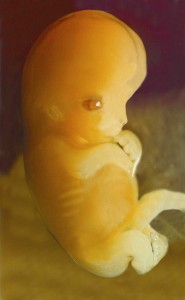I’m always fascinated when I learn a new detail about a baby’s development in the womb, and I read a lot about human development for work. Still, I’m often confused by medical terms, especially those that define earliest stages of development.
Today, I was happy to discover an article by pro-life columnist Wesley J. Smith that explains the terms “embryo” and “blastocyst.” I hope you find his column as helpful as I did:
How often have I heard scientists and political hacks lie by claiming that an embryo isn’t an embryo until it is implanted in a uterus. Before that, they have often said, it is just a “ball of cells,” a “pre-embryo,” or just a “blastocyst.”
By lying about the nature of the embryo, pro embryonic stem cell research advocates hoped to manipulate society into supporting their research agendas.
These arguments were always–and remain–false. When you get down to it, we are all just big balls of cells, so that’s a meaningless term. An embryo, unlike say a tumor, is an organism, in other words, a human embryo is a nascent, developing human being.
Nor is there such a thing biologically as a pre-embryo – as Princeton biologist Lee Silver admitted. That is a political term invented to skew ethical debates and decisions to permit the manipulation of human life.
As for the blastocyst, the term describes an embryo’s stage of development, not a different thing than an embryo. Thus, the, “It’s not an embryo, it’s a blastocyst,” is also junk biology.
Read Smith’s full column here.
Just another fact to remember: When the baby is about eight weeks along, he/she is referred to as a fetus. The seven-week-old baby in the photo above is still considered an embryo.
As pro-lifers, it’s important that we have a basic knowledge about human development. The science is on our side. Let’s use it!

